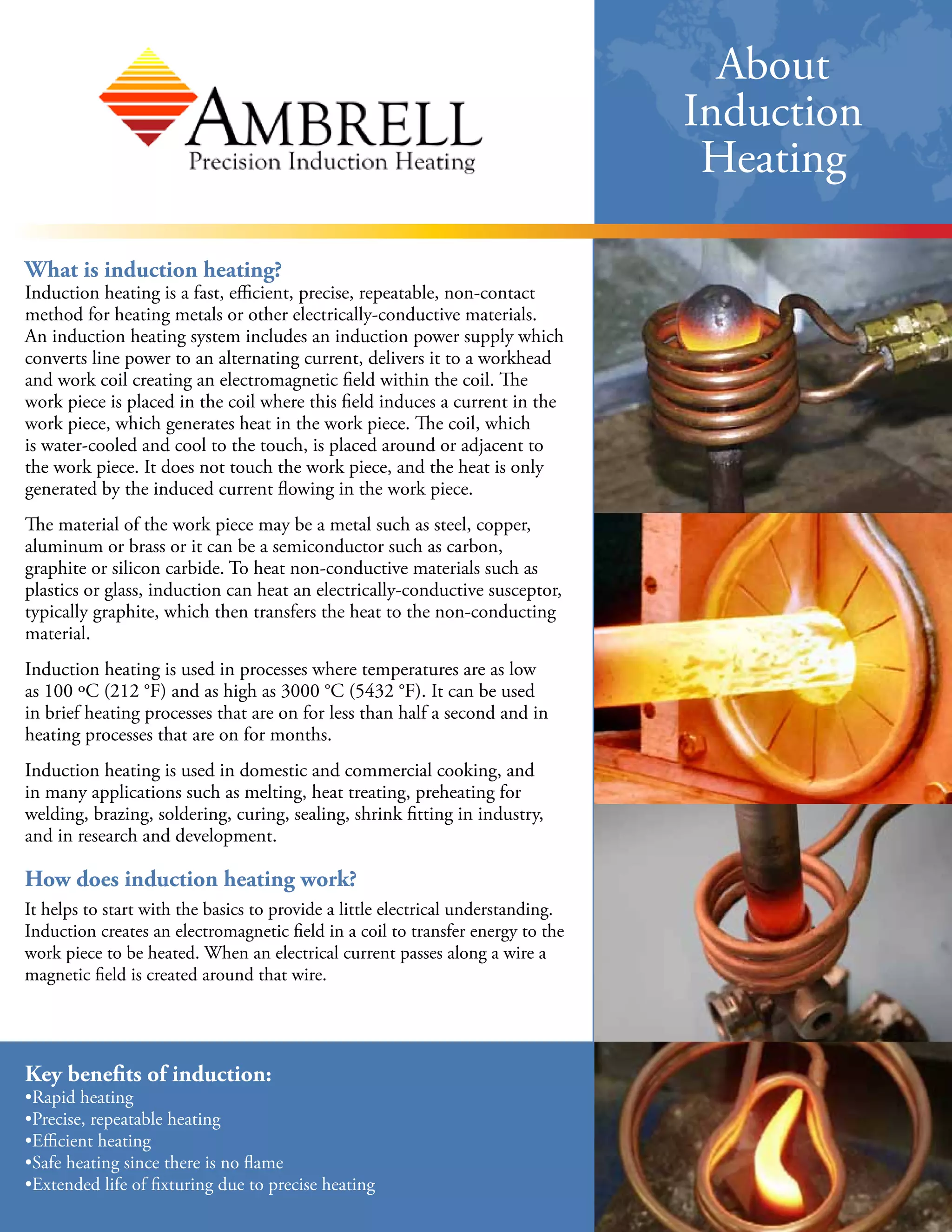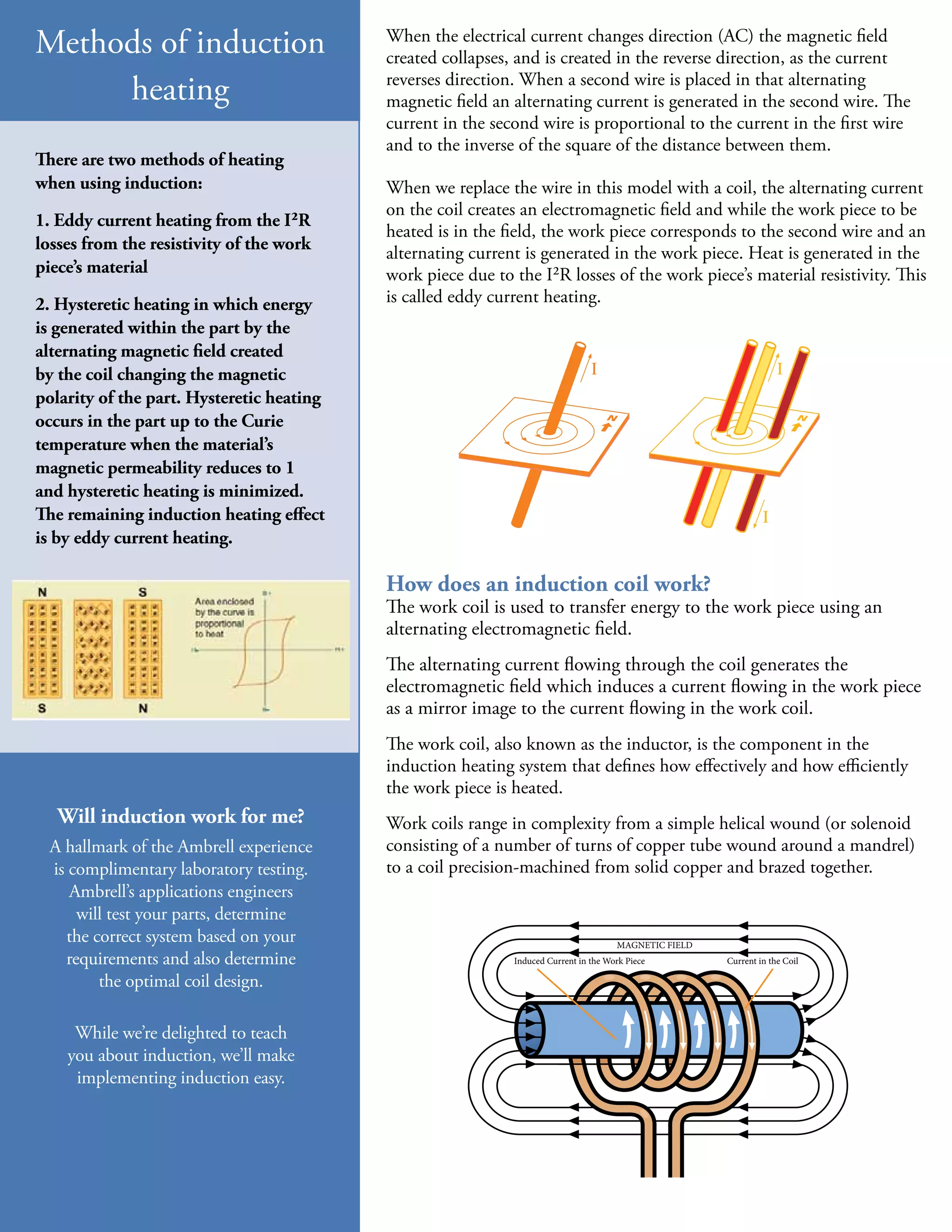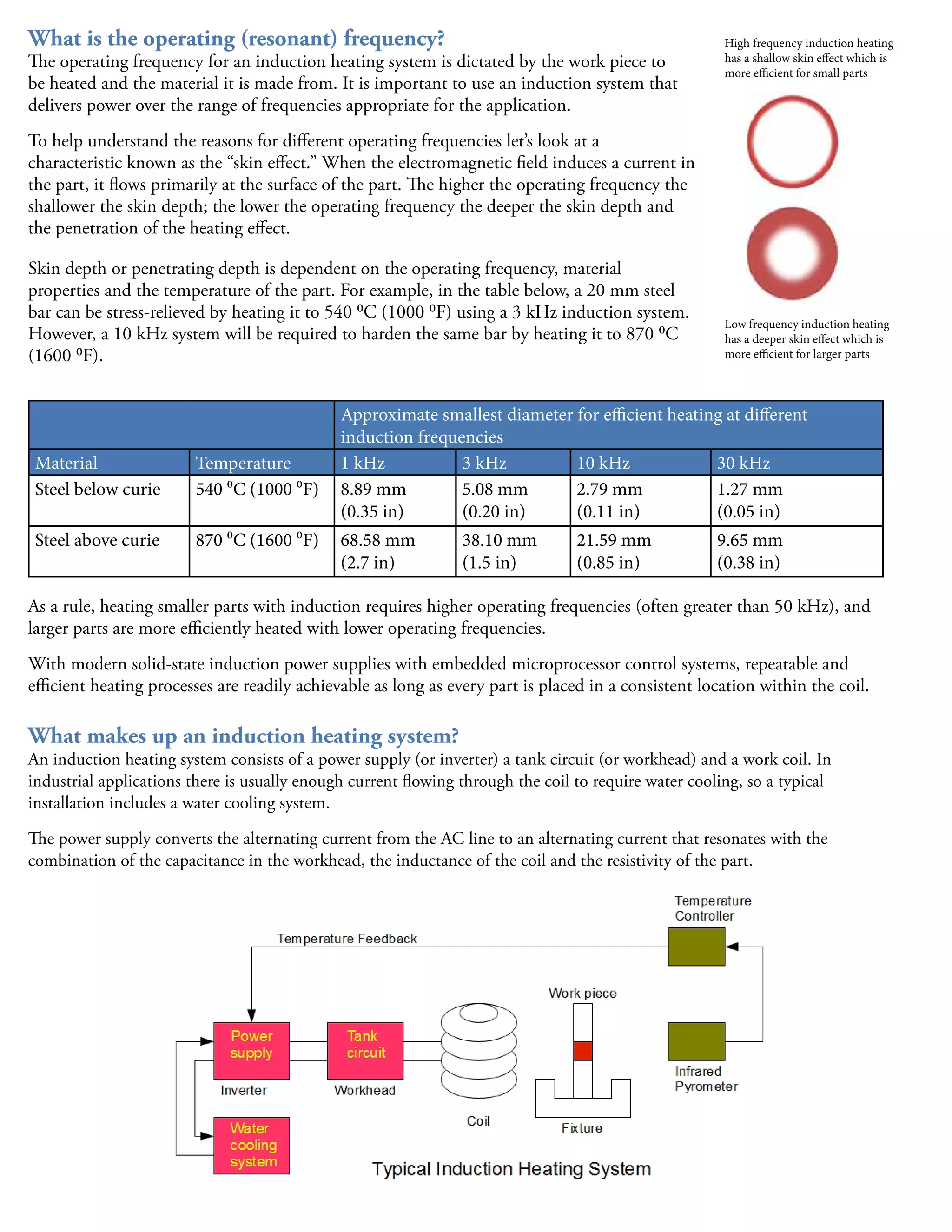Induction heating is an efficient, non-contact method for heating conductive materials using electromagnetic fields to induce currents that generate heat within the workpiece. Benefits include rapid, precise heating and safety since it involves no flame, making it ideal for various industrial applications like welding and melting. Ambrell, a leader in the induction heating market since 1986, offers customized solutions and laboratory testing to optimize heating processes.



